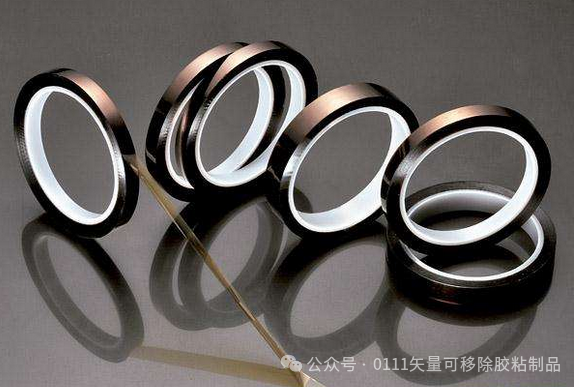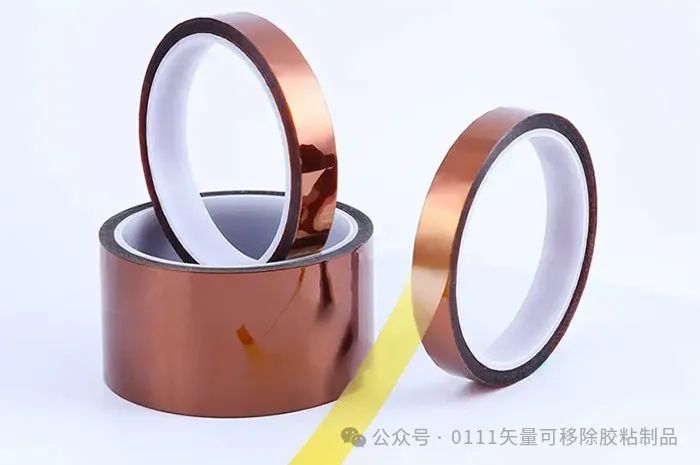Puede quitar la cinta
ClasificaciónPuede quitar la cinta
干货 | 有机硅压敏胶系的优缺点,看完这篇就懂了!
Fuente:本站 Tiempo:2024/3/4 11:25:01 次数:
有机硅压敏胶是所有胶系中价格较为昂贵的一种,在与硅胶粘接或高温粘接等比较常见。今天小编就为您解答,来说说有机硅压敏胶系。
什么是有机硅压敏胶?
有机硅压敏胶是一种特别耐高温的压敏胶。
有机硅压敏胶的优缺点
有机硅压敏胶最大的优点就是它特别耐高温,但这也成为它在生产中的难点,具体如下。
优点:
- 非常的耐高温(耐260度以上的高温)
- 硅胶表面无需处理,可以直接粘贴牢靠
- 无溶剂有机硅压敏胶气味非常低

缺点:
- 相比水胶系、热熔胶系的气味大多了,相比UV压敏胶系的气味,就要看个人接受程度了,总之两个气味都不会小
- 生产车速慢,固化的温度高,在150度以上,从而使产线的投入和生产的成本会更高, 同时有机硅压敏胶水的成本也比亚克力胶系高的多,比UV压敏胶水的成本还要高些,再加上专用的氟素离型膜,氟素离型膜的成本从几元至10几元不等,多数应用领域因无法接受这样的高成本,使得市场的推广大受影响
- 含有甲苯或二甲苯的有机溶剂,使得固化后的胶体有较大的气味,有较强的刺激性
- 低温环境胶面粘性明显变弱
- 胶面对各种材质长时间内的粘贴可移除性能不会太好,个别材质(玻璃/烤漆/大理石)在特定的环境(常温环境)下有短时间(3个月左右)的可移除性
- 无溶剂有机硅压敏胶更多应用于手机钢化膜因为排泡性好,但粘性非常低,有太多的局限性
如何改善可移除性
由于有机硅压敏胶的可移除时间短和限制较多,为了改变可移除性能,通常会采用加稀释剂或者增加固化剂的方法,具体原理如下。
方法1:当设备精度不够或涂胶厚度不变的条件下,便可以通过加稀释剂来调整原胶体的固含量,使干胶厚度变薄,从而降低了胶的初粘力,来提升一定的可移除性能。
方法2:通过加大固化剂的添加量,来增加胶体的内聚力,从而也会大大减低了胶水的初粘力。
需要注意的是,因有机硅压敏胶胶系本体树脂的原因,胶体的持粘力要么在以上的调整下,来实现好的可移除性,但同时持粘力及初粘力都会大幅度减低或像消失了一样。
想了解更多资讯的小伙伴,也可以扫码关注我们的抖音官方账号!

Useful tips | Advantages and disadvantages of organic silicone pressure-sensitive adhesive system, you will understand after reading this article!
Organic silicone pressure-sensitive adhesive is one of the more expensive types of adhesives in all adhesive systems. It is commonly used in bonding with silicone or high-temperature adhesives. Today, let me explain the organic silicone pressure-sensitive adhesive system to you.
What is organic silicone pressure-sensitive adhesive?
Organic silicone pressure-sensitive adhesive is a type of pressure-sensitive adhesive that is particularly resistant to high temperatures.
Advantages of organic silicone pressure-sensitive adhesive
- Highly resistant to high temperatures (can withstand temperatures above 260 degrees Celsius).
- Does not require surface treatment of silicone, can be directly bonded securely.
- Low odor as it is a solvent-free organic silicone pressure-sensitive adhesive.
Disadvantages of organic silicone pressure-sensitive adhesive
- Compared to water-based adhesive systems and hot melt adhesive systems, it has a stronger odor. In comparison to UV pressure-sensitive adhesives, the odor is subjective and depends on individual acceptance. In any case, both odors are not negligible.
- Slow production speed and high curing temperature (above 150 degrees Celsius). This increases the input and production cost of the production line. Additionally, organic silicone pressure-sensitive adhesive has a higher cost compared to acrylic adhesive systems and even higher compared to UV pressure-sensitive adhesive systems. The cost is further increased by the addition of specialized fluorine release film, which ranges in cost from a few yuan to over ten yuan. The high cost of organic silicone pressure-sensitive adhesive hinders its market promotion in many application areas.
- The presence of toluene or xylene organic solvents results in a strong, unpleasant odor and irritant properties in the cured adhesive.
- The adhesive performance weakens significantly at low temperatures.
- The adhesive may have poor removability from various materials after a long period of adhesion. Some materials (e.g., glass, painted surfaces, marble) may exhibit short-term (around 3 months) removability in specific environments (at room temperature).
- Solvent-free organic silicone pressure-sensitive adhesive is more commonly used in mobile phone tempered glass due to its good air bubble elimination properties. However, it has very low viscosity and many limitations.
How to improve removability
Due to the short removal time and restrictions of organic silicone pressure-sensitive adhesive, methods such as adding diluents or increasing the amount of curing agent are often used to adjust the removability. The specific principles are as follows:
Method 1: When the equipment precision is insufficient or the coating thickness remains unchanged, the original solid content of the adhesive can be adjusted by adding diluents. This reduces the thickness of the dried adhesive, thereby reducing the initial tackiness of the adhesive and improving its removability to some extent.
Method 2: By increasing the amount of curing agent, the cohesive strength of the adhesive can be increased, thereby greatly reducing the initial tackiness of the adhesive.
It is worth noting that due to the nature of the resin in the organic silicone pressure-sensitive adhesive system, achieving good removability results in a significant decrease or even disappearance of both holding power and initial tackiness of the adhesive.
anterior:科普 | 用胶带捆绑的蔬菜甲醛超标10倍?真相来了
próximo:干货 | UV压敏胶系的优缺点,看完这篇就懂了!
Copyright © 2023 Dongguan xu cheng tecnología ambiental co., LTD Todos los derechos reservados
Número de registro:粤ICP备2021160255号
